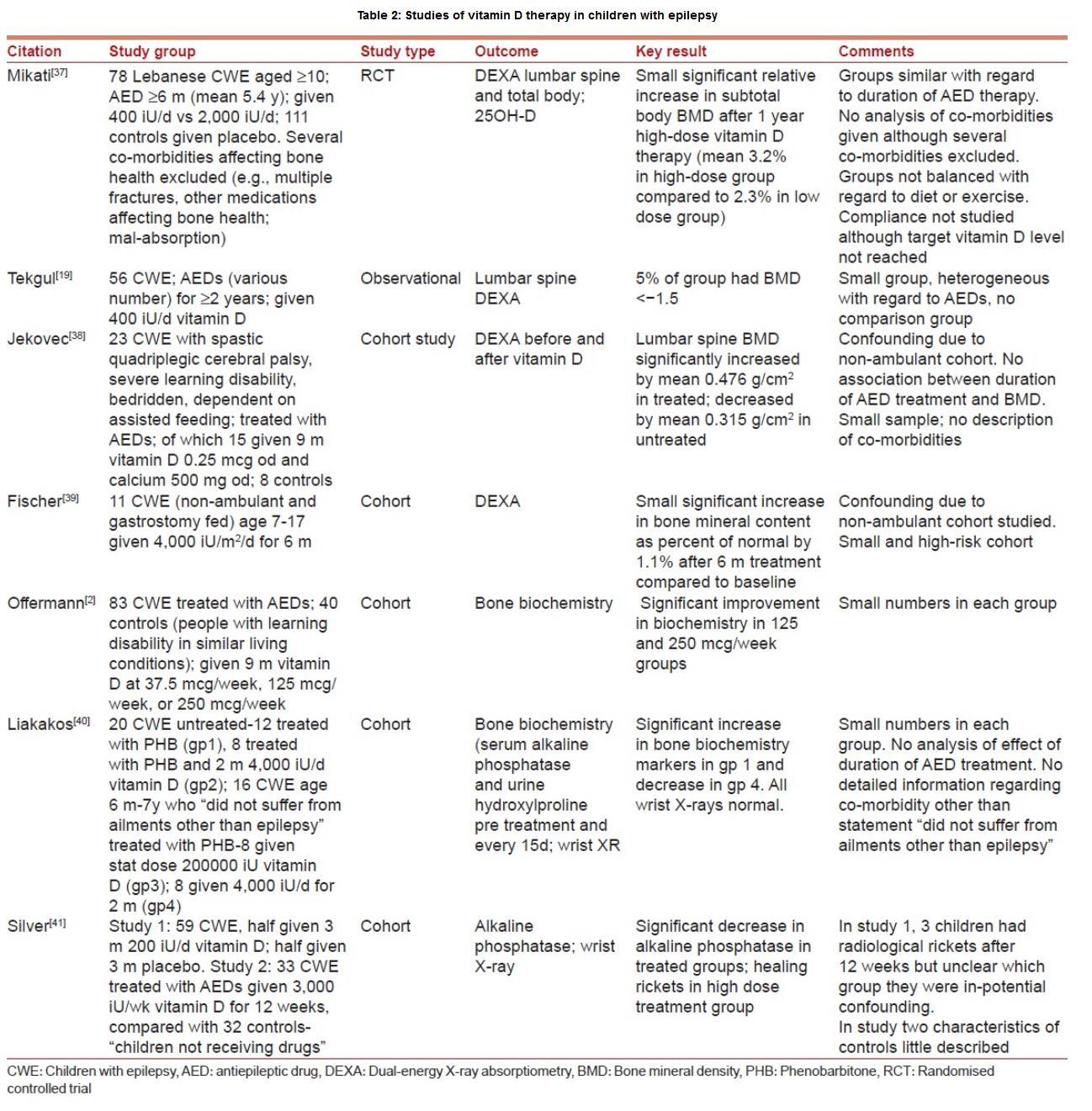Children with epilepsy advised to take vitamin D
Children with epilepsy advised to take vitamin D Epilepsy Org in UK July 2013
Talks about the study listed below
See also VitaminDWiki
Search for Epilepsy OR Seizure in VitaminDWiki 176 items as of Jan 2015
Epilepsy category listing has items along with related searches
Epilepsy and deficiency of vitamin D and-or Magnesium – Feb 2013
Learning Disabilities, anti-epileptic drugs, and subsequent vitamin D deficiency - Oct 2014
Epilepsy seizures reduced by 40 percent after vitamin D levels normalized – April 2012
Comment by VitaminDWiki
The following study shows promising, but not strong evidence for vitamin D and Epilepsy
It does not appears to consider Magnesium nor UV as possible treatment
Vitamin D deficiency in children with epilepsy: Do we need to detect and treat it?
The Journal of Paediatric Neurosciences 2013 | Volume : 8 | Issue : 1 | Page : 5-10
Pooja Harijan, Arif Khan, Nahin Hussain
Department of Paediatric Neurology, Leicester Royal Infirmary, University Hospitals of Leicester NHS Trust, Leicester LE1 5WW, United Kingdom
Date of Web Publication 6-May-2013
Pooja Harijan, Department of Paediatric Neurology, Leicester Royal Infirmary, University Hospitals of Leicester NHS Trust, Leicester LE1 5WW, United Kingdom
Children and adolescents treated with antiepileptic drugs are known to have problems with bone metabolism, bone mineral density loss, and 2-3 times the fracture risk of healthy controls. We reviewed the literature regarding bone mineral density in children with epilepsy and vitamin D therapy in children treated with anti-epileptic drugs. Studies of bone mineral density markers in children with epilepsy have mostly found little significant difference in bone mineral density markers in children with epilepsy. They have been limited by small sample size and many of the studies have not corrected for confounding factors such as comorbidities, mobility, nutrition, and obesity. Studies of vitamin D therapy in children with epilepsy have shown little evidence of effect and have been similarly limited by lack of stratification with regard to confounding factors. There is a need for larger studies, using clinically significant outcomes such as fractures, including at risk populations such as symptomatic generalised epilepsy, impaired mobility, and polytherapy. At the present time in the absence of good evidence to the contrary, there remains concern that children with epilepsy are at risk of poor bone health and that vitamin D therapy may be beneficial. As low-dose vitamin D supplementation (400 IU per day) is now recommended for healthy children and it is biologically feasible that children with epilepsy may be at higher risk of clinically significant deficiency, it is important that neurologists ensure that low-dose vitamin D supplementation should be prescribed and compliance followed up in children with epilepsy.
Two tables from the study


Clipped from full text on-line
Discussion
Most of the studies of bone mineral density markers in children with epilepsy [Table 1] have found little significant difference in bone mineral density markers in children with epilepsy. However, these studies may be biased as most included a small sample, and did not include large enough numbers to enable comparison between specific antiepileptic drugs or therapies, or between different epileptic syndromes. Of those studies in which this comparison was attempted, a significant association between sodium valproate and markers of poor bone health was found; but as this was only in small numbers, it might represent a spurious association that has not been excluded. In addition, many of the studies did not correct for confounding factors such as mobility, nutrition, and obesity. One small study that considered the effect of ambulatory status [32] did however, find a significant difference in bone health between ambulant and non-ambulant children. Studies of vitamin D therapy in children with epilepsy have been similarly limited by lack of stratification with regard to factors that influence bone health such as comorbidities, nutrition, obesity, and mobility. Hence although there is little evidence for an effect, there is limited evidence for no effect. The only randomized controlled trial [14] was limited in terms of duration of therapy, lack of controlling for diet/exercise, and lack of study of compliance despite not attaining target vitamin D levels.
Conclusion
Studies to date are inconsistent and of limited quality. In particular, there is a need for larger studies, using clinically significant outcomes such as fractures, including at risk populations such as symptomatic generalised epilepsy, impaired mobility, and polytherapy. At the present time in the absence of good evidence to the contrary, there remains concern that children with epilepsy are at risk of poor bone health and that vitamin D therapy may be beneficial. As low-dose vitamin D supplementation (400 IU per day) is now recommended for healthy children and it is biologically feasible that children with epilepsy may be at higher risk of clinically significant deficiency, it is important that neurologists ensure that low-dose vitamin D supplementation should be prescribed and compliance followed up in children with epilepsy. [41]
